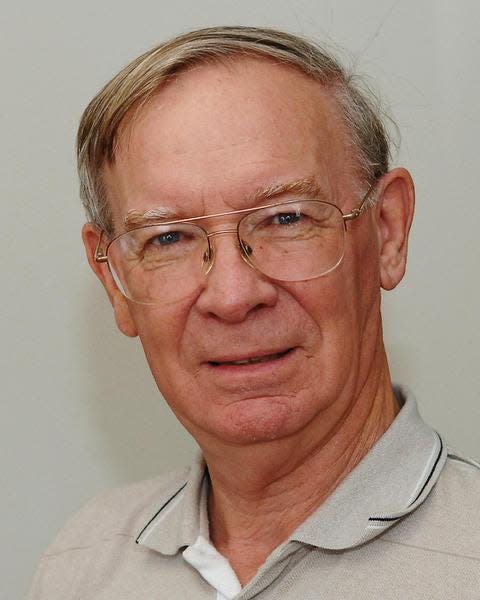Play (vintage) ball! How baseball developed into a popular sport after the Civil War
- Oops!Something went wrong.Please try again later.
“Rehobothites,” the Wilmington Daily Republican reported on Aug. 26, 1899. “have taken considerable interest in the animated baseball contest between the nine of Lewes and Cambridge. Yesterday the fourth game of a series took place at Lewes, and as the previous three games had resulted in two to one in favor of Cambridge, there was deep interest in the outcome both here [Rehoboth] and at Lewes.”
Today, historians dismiss the notion that baseball was invented by Abner Doubleday. Instead, they point to a variety of forgotten games, such as town ball, stool ball and rounders, as the ancestors of baseball.
By the beginning of the Civil War, baseball virtually completed its evolution and closely resembled the modern game. Organized baseball clubs had appeared by the 1840s, regular games were played by the 1850s, and inter-city play began before the outbreak of the Civil War.
It is not known when the boys of Delaware witnessed their first baseball game; but during the Civil War, Union troops, including a Delaware regiment, were encamped at Falmouth, Virginia, where a number of regiments organized baseball teams.
Games among the regimental teams were often played between afternoon drill and the evening dress parade. When the soldiers returned home, they carried the memory of baseball with them.
Fighting in the Civil War ended in April 1865, and by the next year, organized baseball teams were playing Delaware. In July 1866, a club from Washington, D. C. traveled to Wilmington to play a baseball game with a Delaware club. The Wilmington team defeated the club from the nation’s capital by a score of 31 to 12.
Many Civil War veterans found jobs in the growing number of canneries, mills and other industrial plants that sprung up in Lewes and other southern Delaware towns. Workers often developed a camaraderie that led to the establishment of company sponsored baseball clubs. In the late 1890s, the bay pilots financed a baseball team in Lewes.
On June 22, 1895, the Delaware Pilot reported “The interest manifested by the Lewes public in baseball and the hearty support which they are inclined to give the team should be an incentive for them to put forth their best efforts to maintain a creditable standing in the local baseball world.”

For a time, the Lewes club played on the flats of Lewes Beach until a baseball diamond was established across from the railroad station near the entrance to town.
Most of the time, the newspapers gave only brief notices to baseball games, but when the Wilmington Daily Republican reported on the 1899 game between teams from Lewes and Cambridge that generated some much interest by the “Rehobothites”, there was more action to report than just the normal baseball game.
According to the Wilmington newspaper, “Several hackloads [from Rehoboth], flying gay flags and with tingling sleighbells, went to witness the game at Queen Anne Park, near Lewes. The game wound up with two runs ahead for Cambridge, the score being five to seven.”
One of the two umpires, Adkins Henry from Cambridge, made some questionable calls, and he “became the special object of animosity for part of the crowd.”
DELAWARE HISTORY: 8 things to know about newly restored World War II tower in Delaware Seashore State Park
PICKLEBALL IN DELAWARE: Pickleball players have flocked back outdoors for the warm seasons. Here's where to play.
When hostile spectators approached Henry with fire in their eyes, the other umpire, Charles Moore of Georgetown, jumped in front of Henry and hustled him into a nearby carriage, whose driver quickly whipped the horses to a gallop, and the offending umpire was sped away.
The newspaper laconically commented, “Further trouble was averted.”
Principal sources
Delaware Republican, June 25, 1866.
Delaware Pilot, June 22, 1895
Evening Journal, May 28, 1894; May 8, 1895; July 7, 1899.
Baseball Almanac, “Civil War Baseball: Baseball And The Blue And The Gray.” https://www.baseball-almanac.com/articles/aubrecht2004b.shtml
Harold Peterson, The Man Who Invented Baseball, New York: Charles Scribner’s Sons, 1973, pp. pp. 4-10.
This article originally appeared on Salisbury Daily Times: How baseball developed into a popular sport after the Civil War
